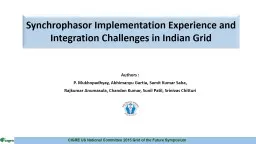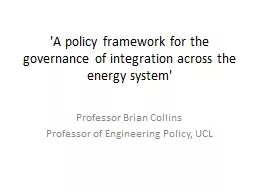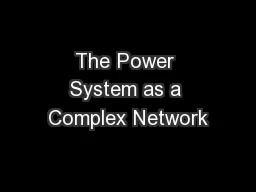PPT-Synchrophasor Implementation Experience and Integration Challenges in Indian Grid
Author : test | Published Date : 2018-09-22
Authors P Mukhopadhyay Abhimanyu Gartia Samit Kumar Saha Rajkumar Anumasula Chandan Kumar Sunil Patil Srinivas Chitturi Outline Indian Grid Overview Synchrophasor
Presentation Embed Code
Download Presentation
Download Presentation The PPT/PDF document "Synchrophasor Implementation Experience ..." is the property of its rightful owner. Permission is granted to download and print the materials on this website for personal, non-commercial use only, and to display it on your personal computer provided you do not modify the materials and that you retain all copyright notices contained in the materials. By downloading content from our website, you accept the terms of this agreement.
Synchrophasor Implementation Experience and Integration Challenges in Indian Grid: Transcript
Download Rules Of Document
"Synchrophasor Implementation Experience and Integration Challenges in Indian Grid"The content belongs to its owner. You may download and print it for personal use, without modification, and keep all copyright notices. By downloading, you agree to these terms.
Related Documents














